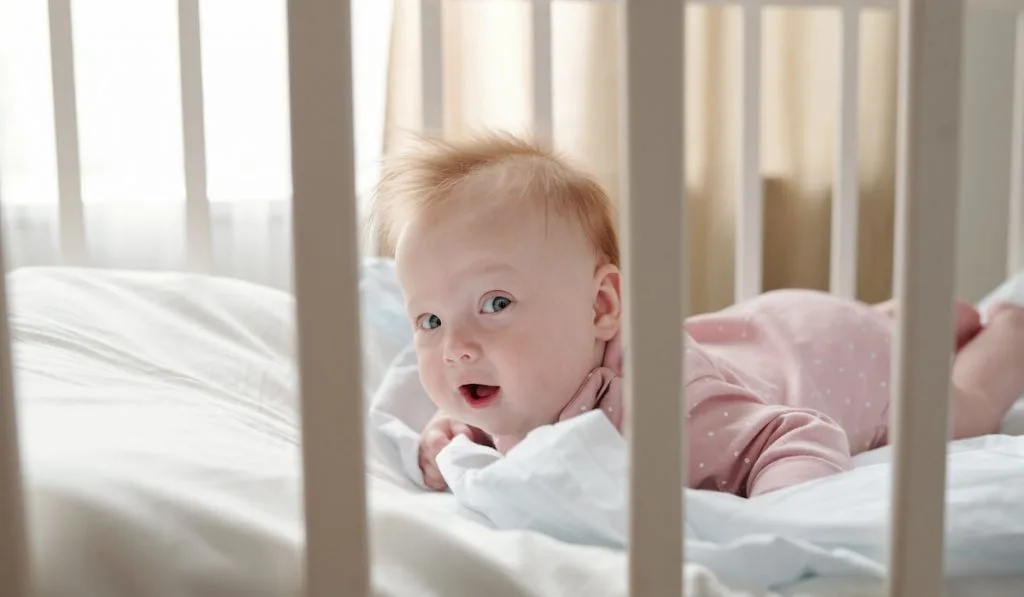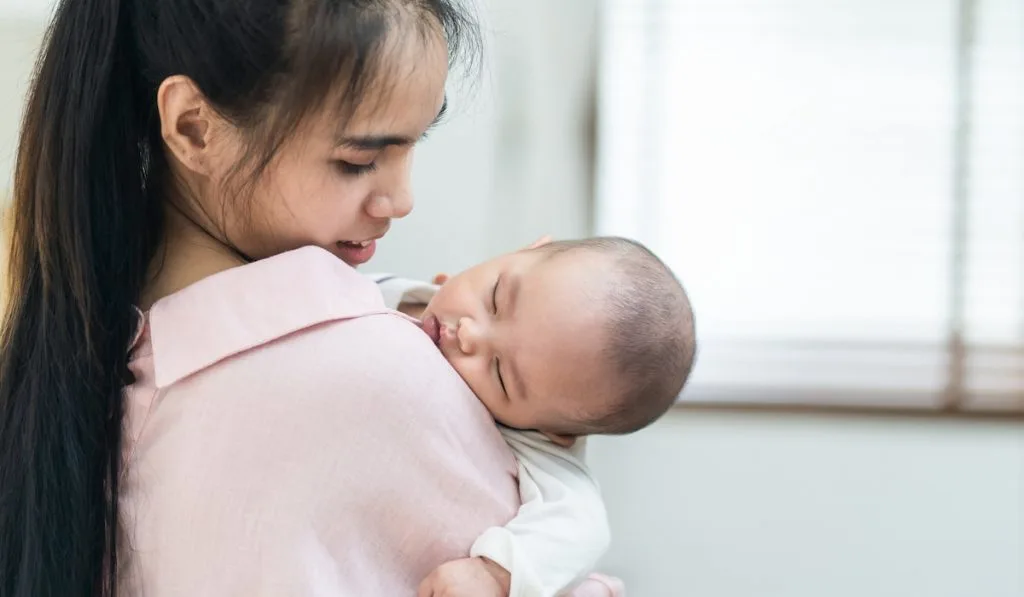You just fed your baby, rocked her to sleep, and the minute you place her in the crib, it’s all cries and she’s once more awake!
Trying to move your baby to the crib can be exhausting and frustrating, especially if all they do is wake up no matter how slowly, gently, or quietly you do it.
Getting your baby to sleep in their crib requires a lot of patience and the right environment. These comforting, familiar conditions can aid you when you need to move your sleeping baby without waking her up.
Read on to learn more on some of the things that may cause the baby to wake up and the steps you can take when transferring a sleeping baby to their crib.

Common Things That May Cause the Baby to Wake Up
Some of the things that may cause a baby to wake up while transferring him to the crib include:
Change of Environment
A baby is likely to wake up when you transfer them from your warm snuggle to a cool surface or environment. Also, if the baby is all warm in your arms and you place them onto a cold bed, he will most likely wake up.
The Baby Is Not Fully Asleep
It takes close to 20 minutes for a baby to fall into a deep sleep. If you transfer them to the crib immediately after they shut their eyes, they are likely to wake up.
Noisy Environment
Moving the baby to a noisy place while he was previously somewhere silent is likely to startle and wake him up.
Steps on How to Transfer Your Baby to the Crib Without Waking Them
Transferring your baby to the crib doesn’t have to be overwhelming, here are some steps to take for a successful transfer.
Create the Ideal Environment Ahead of Time
Ensure you have a clear path to their crib to reduce instances of tripping or making any sudden movements.
Prepare the crib and ensure you have a cozy sleeping environment before you transfer the baby to the crib. Use a hot water bottle to pre-heat the crib’s surface. Be sure to remove the hot water bottle from the bed and check the mattresses’ warmth before placing the baby down.
Don’t forget to check the baby’s room temperature, which should be between 68-72 degrees Fahrenheit during winter and summer.
You can also swaddle the baby if he’s 0-3 months as this makes him feel secure and prevents him from waking up due to the natural startle reflex.
Some babies will sleep with the lights on, while others fall asleep sooner with dimmed lights. Make these adjustments before moving the baby. You can also use a white noise machine to mask any background noises and calm your baby to sleep.
Most babies have something that provides them comfort. That could be a blanket, a cuddly toy, or a pacifier. Ensure that you have your baby’s favorite item with you and place it in his arms or mouth.
Babies can smell their mother’s natural scent. Place any worn item like a t-shirt or a vest in the crib. Your baby will be less likely to realize that you’re not holding him because he can still smell you.
Wait Until the Baby is Deep Asleep

Don’t rush to move the baby to the crib five minutes into his sleep. Wait for 10-20 minutes as this is when they are deep asleep.
Watch out for deep sleep signs like a completely relaxed body and slow, but even breaths. A baby will breathe deeply and their muscles are relaxed when deep asleep.
You can also check if the baby is deep asleep by lifting his arm. If the arm is floppy and drops easily that means deep sleep, but resistance is a sign of light sleep.
Move Slowly
Avoid rushing to place the baby in his crib once you get there. Give yourself time and allow the baby to get a feel of the crib area. Remember that placing a baby in their crib may feel like falling, which can scare and wake him up.
Keep the baby close by lowering your body over the crib, instead of reaching down with the baby. That helps the baby feel secure.
At this point, you can lower the baby in two ways.
You can lower the baby’s lower half of their body to touch the crib’s surface first than lower the other upper half of the body. Alternatively, you can lower the baby in a way that his side touches the surface first and then roll him to his back.
Once the baby is down, slowly remove your arms out from under him.
Provide a Snuggly Feel
Once the baby is down and asleep, don’t leave immediately.
Place your hand on their chest or tummy. That touch helps them relax and adapt to the new space. Slowly and gently remove your hands from your sleeping baby.
If the baby moves, try patting his back for some minutes before you walk away.
What to Do if Baby Wakes Up During the Transition

Your baby might get startled and wake up when you place him on the crib.
If the baby wakes up during the transition, give him some time as he may not have been in a deep sleep.
Note that you need to be consistent with the routine for him to get used to his crib.
Touch and pat the baby’s tummy lightly as a reassurance that you’re still around. That will calm him down and he might fall back asleep eventually.
Parenting can be exhausting, and you may be tempted to move the baby to his crib quickly, but this may startle and wake the baby. Learn how to ask for help from a family member or friend. A different person can rock and calm the baby, which could make the transition easier and quicker.
Conclusion
You can slowly and lovingly help your baby get used to sleeping in their crib by following the above steps.
Remember that the first try may not work, and you may need to keep repeating the steps to get the baby into the crib without protest. Be patient, but consistent. Eventually, your little one will gradually get used to sleeping in their crib and you’ll have time to rest and do other things.
Resources
- https://kidshealth.org/en/parents/sleep47m.html
- https://www.pregnancymagazine.com/baby/art-transfer
- https://www.askdrsears.com/topics/health-concerns/sleep-problems/8-infant-sleep-facts-every-parent-should-know/
- https://medlineplus.gov/ency/article/002392.htm
- https://www.webmd.com/parenting/baby/features/baby-sleep-expert-answers#1
- https://www.nationwidechildrens.org/specialties/sleep-disorder-center/sleep-in-infants
